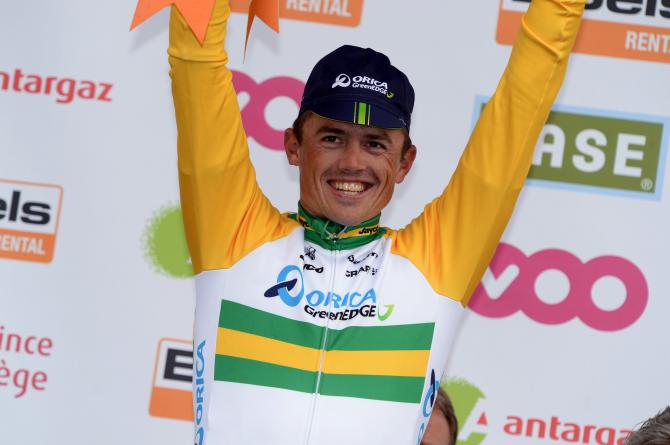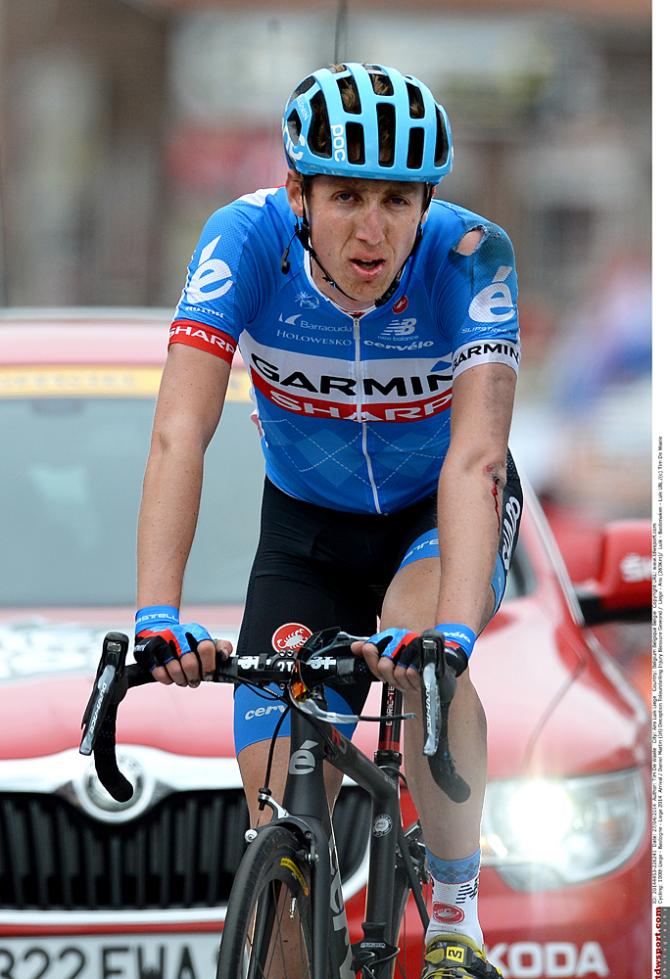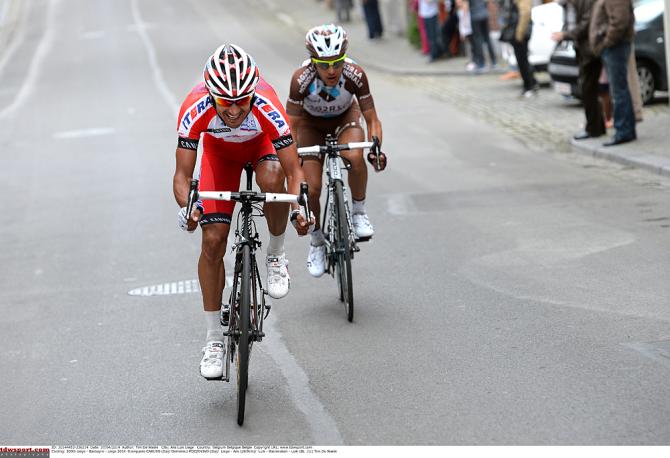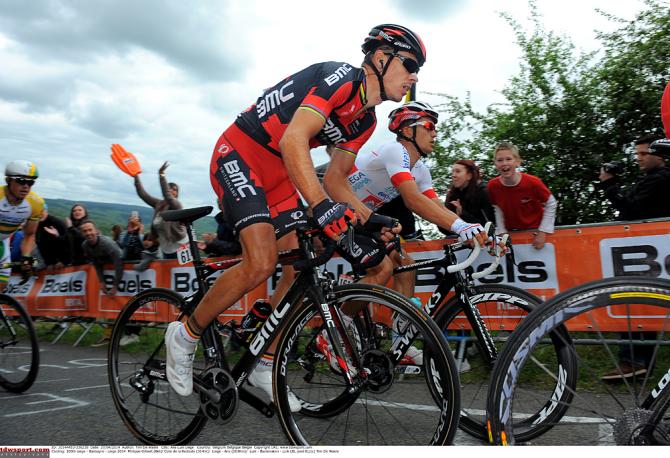10 conclusions from the Ardennes Classics
Detailed analysis of the hilly spring Classics




1. Gerrans’ excellent strike rate
Gerrans wins Liège-Bastogne-Liège 2014
Gerrans sprints to centenary triumph in Liège-Bastogne-Liège
Dan Martin suffers final corner crash in Liege-Bastogne-Liege
Kwiatkowski confirms promise with podium in Liège-Bastogne-Liège
Gilbert lacking in Liège-Bastogne-Liège
When Simon Gerrans radioed through to Matt White with 'I'm not good' as he climbed Saint Nicolas, the Orica-GreenEdge team car fell silent for almost a minute as White began scratching around for a plan B. He need not have worried with Gerrans bouncing back to step up and deliver a tactical display of brilliance, timing and strength to win Liège-Bastogne-Liège.
White called it the team's biggest ever win – a lofty call given they've won stages in the Tour de France and Milan-San Remo. But with the Santos Tour Down Under and a Monument classic in the bag, and Michael Matthews primed for the sprints at the Giro d'Italia, White has a number of reasons to be happy.
As for Gerrans, his palmares stands out for two reasons: firstly there's little fluff or as Cavendish would say 'shit little races.' Instead Gerrans sets himself the target of one or two major objectives in a season and works for them accordingly. Secondly, how many times does the Australian road champion give post-race interviews in which he complains or is questioned over his tactics. It very rarely happens, meaning the Australian has a brilliant strike rate whenever he,s in a position to win.
Liège-Bastogne-Liège was a huge win for the Australian on a personal level and at 33, and with the final year of his contract winding down, he needed a win to ensure a bumper pay cheque for that final contract of his career.
At the finish line a giddy Matt White made it clear to Cyclingnews that Orica-GreenEdge is where Gerrans belongs. He’s right, he’s had his best results at this team, and the WorldTour squad will ultimately look to keep their talisman, while perhaps letting other Australians go.
2. Dan Martin grows as a team leader
Get The Leadout Newsletter
The latest race content, interviews, features, reviews and expert buying guides, direct to your inbox!
Dan Martin may have left an everlasting impression on the Ardennes but it certainly wasn't one the Irishman would have been hoping for. However once the physical and mental wounds heal Martin can look back at a campaign that provided more than just results.
Coming into the trio of races Martin was relaxed and confident. Second at Fleche-Wallonne would be his best result but in a year in which Garmin-Sharp has lost and replaced a large contingent of experienced riders, Martin has become the team's true leader. He epitomizes what Vaughters wants the team to have: a clean image, a good rapport with the fans and media and an aggressive racing style.
Martin may have missed out on a win this week – and Liège-Bastogne-Liège leaves us all with a haze of ‘what ifs’, but with the Giro d'Italia coming very soon, Martin can head to Belfast hardened and more determined than ever after the Liège-Bastogne-Liège loss he has suffered.
3. Schlecks struggle
The Schleck brothers came into the Ardennes talking a good game but on the roads of Holland and Belgium there are few hiding places and over the course of the three races both Andy and Frank gave us true reflections over where their seasons lie.
Older brother Frank has at least shown glimpses of his old self this season and he can certainly point to his suspension and the style of racing that hampered his chances in at least two of the Ardennes.
However Andy’s season remains in limbo with three DNFs to his name. Take to Twitter if you want to have a gander at the armchair psychologists who believe he is simply 'not happy’ but only those within Schleck’s camp and the man himself will truly know why the rider who helped light up three edition of the Tour de France in a row is so far from the athlete he used to be.
He argues that his form has been good and but for a knee injury he would have performed well in the Ardennes. Now out of Romandie due to his injury, he has no chance to save his spring and even his summer looks compromised.
4. Team Sky's poor showing in Ardennes
The cobbled Classics brought success and shoots of optimism for the British team with Ian Stannard, Bradley Wiggins and Geraint Thomas all netting results. The Ardennes Classics have taken those shoots and ripped them from the ground and exposed a team struggling in just about every area.
Part of the problem is that they've made winning seem far too easy over the last two years. Nine victories this year is hardly a disaster, yet compared to the 17 they had accumulated by the end of April last year, it shows the team has struggled to perform anywhere near as well. Marginal gains have been replaced by marginal losses.
If it’s not a concern for Brailsford it should be for Froome who looks short of the necessarily help he'll need even if he does remain the Tour de France favourite.
Team Sky had only one finisher in Liège-Bastogne-Liège [Nathan Earle was 70th] and only two finishers in Fleche-Wallonne and the Amstel Gold Race. Their best result in all three races was Boasson Hagen's 39th place in the Netherlands.
That's not good enough for any WorldTour team and certainly not one of Team Sky's calibre and expectations. That they flew Froome to Liege illustrates part of the problem. He'd been ill for days, yet Portal told Cyclingnews on the eve of the race that his leader was raring to go but on the morning of the race Froome was out. Was the team not aware of the illness, and if so why fly him to Belgium?
The Ardennes are not the biggest objectives of the season for the British team and injury and illness are nothing new to top level sport yet Team Sky seems to have coped poorly with their problems and it makes the Tour de Romandie all the more important, especially for Froome and Porte. Time and excuses are starting to run out.
5. BMC breakout
At last BMC scored a Classics win to justify the talent pool the team has possessed for some time.
That the Amstel Gold Race provided the most exciting of the three Ardennes Classics is a topic in itself but BMC made it even more impressive by delivering a consummate team performance that was sealed by Philippe Gilbert's solo win.
The team has never lacked potential leaders but two genuine contenders for the win at the Amstel Gold Race - Van Avermaet and Samuel Sanchez - were ordered to work for the Belgian and finally, after so many attempts, BMC had the strength to control the field and a leader in strong enough form to seal the win.
BMC didn't find the results they were looking for in Fleche-Wallonne or Liege-Bastogne-Liege but with second in Omloop Het Nieuwsblad, second at the Tour of Flanders and a win at the Amstel Gold Race, Peiper's squad can be happy with their spring.
6. Kwiatkowski leads the new Ardennes generation
Peter Sagan (Cannondale) and John Degenkolb (Giant-Shimano) lead the new generation of emerging riders in the cobbled Classics. In the Ardennes, Michal Kwiatkowski (Omega Pharma-QuickStep) indicated that he will be a future winner on the cotes of Limburg and Wallonne.
The 23-year-old Polish rider finished fifth in the Amstel Gold Race, third in Fleche-Wallonne and third at Liege-Bastogne-Liege and seemed to handle leadership at OPQS with ease.
He perhaps lacks the big-race endurance to be at his very best after 250km but his talent is unquestionable and he will be the name to watch in years to come along with Tom Jelte-Slagter (Garmin-Sharp) and Julian Arredondo (Trek Factory Racing).
Kwiatkowski's spring is even more impressive when you add in his stage racing results. He won the Volta ao Algarve, was race leader at Tirreno-Adriatico for two days and was second behind Alberto Contador at the Vuelta al Pais Vasco. He deserves a spring break more than anyone.
7. Valverde rocks steady
With three podium finishes and two wins in Liege-Bastogne-Liege stretching all the way back to 2006, plus two victories in Fleche-Wallonne, Alejandro Valverde is turning into the most consistent Belgian Ardennes Classics rider of his generation.
Third in Liege-Bastogne-Liege last year and second this time round, it is hard to know whether we should see his glass of results as half-empty or half-full.
Do so many near misses mean the Movistar rider can be slated because he could have and should have won more? Or should we just admire somebody who either hits the goalpost or scores a goal with such impressive frequency?
It is true that tactically Valverde does not always get things right. Yet his ability to remain a contender for such a long period of time is there in black and white on the results sheet for nearly a decade now. Those saying he cannot read a race should perhaps watch the video of his faultless ride to victory on the Mur de Huy last Wednesday. His ride at Liege-Bastogne-Liege was near perfect too.
8. Liege-Bastogne-Liege route changes
All three Ardennes Classics this year ended in a similar scenario, with a huge bunch of favourites massing at the foot of the final climb after some minor or clearly doomed earlier attacks had fizzled out.
While that is pretty much what Fleche-Wallonne has always been about -the last time a break got to the top of the Mur de Huy ahead of the field was in 2003 with Igor Astarloa, it has to be said that Liege-Bastogne-Liege lacked any real sparkle and aggressive racing until the last 500 metres.
The 263 kilometre race earned itself just two stars out of five from L'Equipe this year. And even the venerable Belgian French language newspaper Le Soir, while praising Gerrans, called Liege-Bastogne-Liege "the most disappointing spring Classic of 2014 and the most disappointing Liege-Bastogne-Liege of recent years."
So why was so much of Liege-Bastogne-Liege such a controlled race?
It is possibly true, as Philippe Gilbert (BMC Racing) claimed afterwards, that the average performance level of all racers is much higher this year, making it difficult for anyone to excel. Or perhaps, as Alejandro Valverde reportedly pointed out, when you're racing at top speed - as was the case on the return leg of Liege, with a stiff tailwind aiding the riders yet further - then thinking about attacks is very hard.
It's also arguable that the current UCI WorldTour points system seems to favour more conservative racing, given that as Warren Barguil (Giant-Shimano) said after Liege-Bastogne-Liege, keeping your powder dry to be sure of a ninth place, for example, is often more amply rewarded than the all-out, risky breakaways he currently favours.
You could also mention that all the top Classics teams seem have a phalanx of domestiques almost as good as their leaders - like Samuel Sanchez at BMC and Pieter Weening at Orica-GreenEdge, who were ready to chase down the outsiders and control the racing.
But what seems even more certain is that the re-working of the Liege-Bastogne-Liege route this year into one of its hardest finales ever seems to have had the complete opposite of the desired effect.
Riders are already "scared of attacking," Gilbert said after the race. How much more so is that true when they know they have to face 4200 metres of climbing at Classics speed? Long gone are the days when the La Redoute and the Cote des Forges, hitherto two of Liege-Bastogne-Liege 'crunch moments.' used to be followed by a 30 kilometre descent to the Boulevard de la Sauveniere avenue in central Liege.
However, a more evenly balanced selection of climbs during the last part of the route is possible. You could introduce more cotes before the Redoute (rather than just the Vecquée) and then cut back on the ascents that follow. Is it too risky to experiment and create what could actually a more traditional and exciting race? This year's route confirms that the more climbs you have in a finale of a Classic makes it more interesting. Indeed, less can often mean more. Balance is the key, even at Liege-Bastogne-Liege.
9. Italy fails...up to a point
Italy's wait for a first Monument victory since Damiano Cunego in 2008 will now continue until at least Il Lombardia in October but there were signs of some sort of revival of their chances, at Liege-Bastogne-Liege.
Domenico Pozzovivo (AG2R La Mondiale) and Giampaolo Caruso (Katusha) were both very active in the finale, with Pozzovivo first soaring away on the Roche aux Faucons and again with Caruso on the Saint Nicolas and all the way up to Ans.
Just ahead of Daniel Martin when he crashed, Caruso hung on for a fine fourth and Pozzovivo claimed fifth. However neither of these were pre-race favourites or the riders Italy expected to shine. However the Italian media was happy to have a story, even if Vincenzo Nibali (Astana), Damiano Cunego (Lampre-Merida) or Amstel 2012 winner Enrico Gasparotto (Astana), all seemed to be firing blanks in the Ardennes.
10. Waiting for Costa
As reigning world champion, Rui Costa (Lampre-Merida) stands out the peloton but this season, barring second overall in Paris-Nice, the Portuguese rider has yet to produce a top result.
And after failing to set the world alight at the Amstel Gold Race and Fleche-Wallonne, in Liege-Bastogne-Liege an untimely crash saw him abandon, thankfully with only minor injuries.
Should he and we worry about the weight of the rainbow jersey on his shoulders? He has repeatedly said that his season is centred almost wholly on the Tour de France, so it only seems fair to judge how well he has raced in 2014 at the end of July, not before.